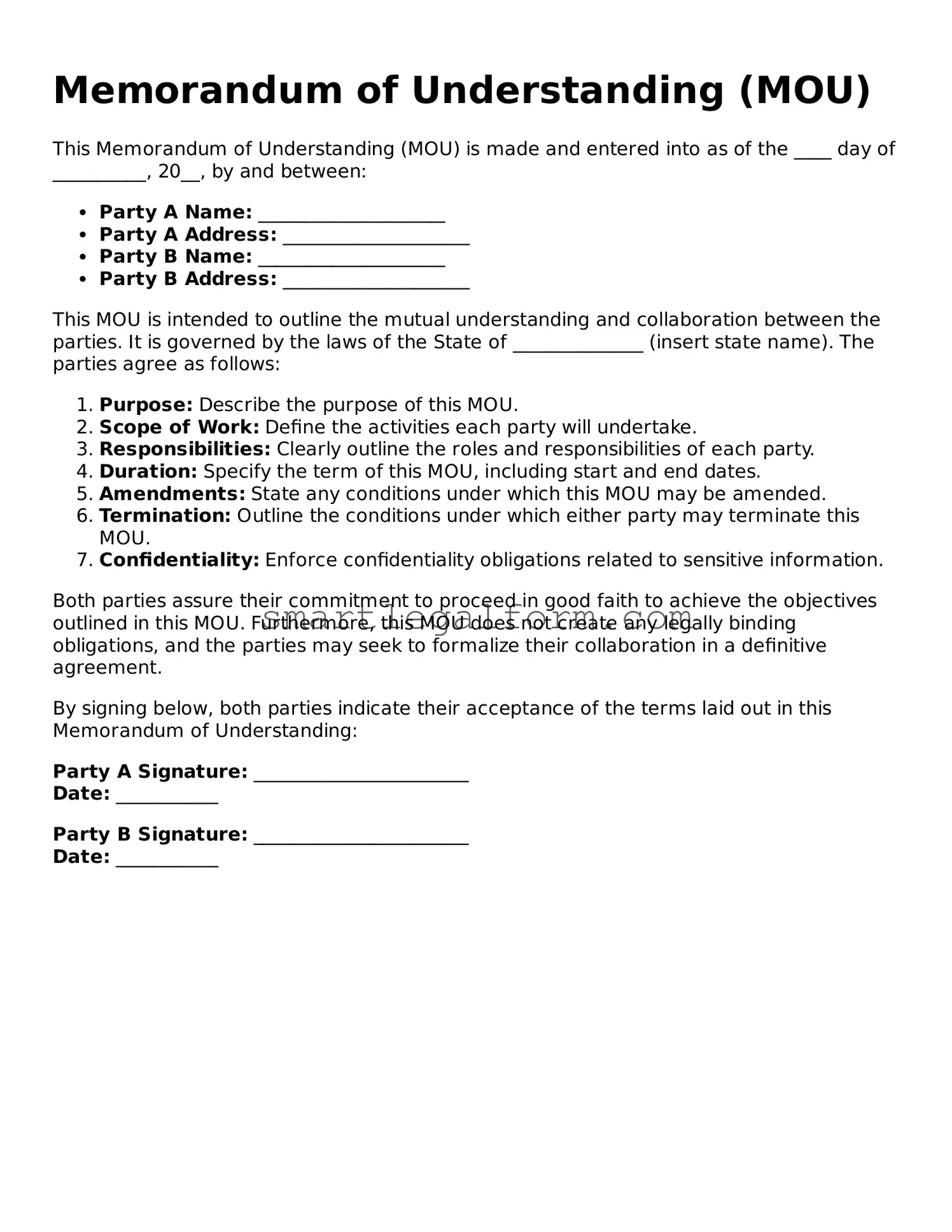Memorandum of Understanding (MOU)
This Memorandum of Understanding (MOU) is made and entered into as of the ____ day of __________, 20__, by and between:
- Party A Name: ____________________
- Party A Address: ____________________
- Party B Name: ____________________
- Party B Address: ____________________
This MOU is intended to outline the mutual understanding and collaboration between the parties. It is governed by the laws of the State of ______________ (insert state name). The parties agree as follows:
- Purpose: Describe the purpose of this MOU.
- Scope of Work: Define the activities each party will undertake.
- Responsibilities: Clearly outline the roles and responsibilities of each party.
- Duration: Specify the term of this MOU, including start and end dates.
- Amendments: State any conditions under which this MOU may be amended.
- Termination: Outline the conditions under which either party may terminate this MOU.
- Confidentiality: Enforce confidentiality obligations related to sensitive information.
Both parties assure their commitment to proceed in good faith to achieve the objectives outlined in this MOU. Furthermore, this MOU does not create any legally binding obligations, and the parties may seek to formalize their collaboration in a definitive agreement.
By signing below, both parties indicate their acceptance of the terms laid out in this Memorandum of Understanding:
Party A Signature: _______________________
Date: ___________
Party B Signature: _______________________
Date: ___________
